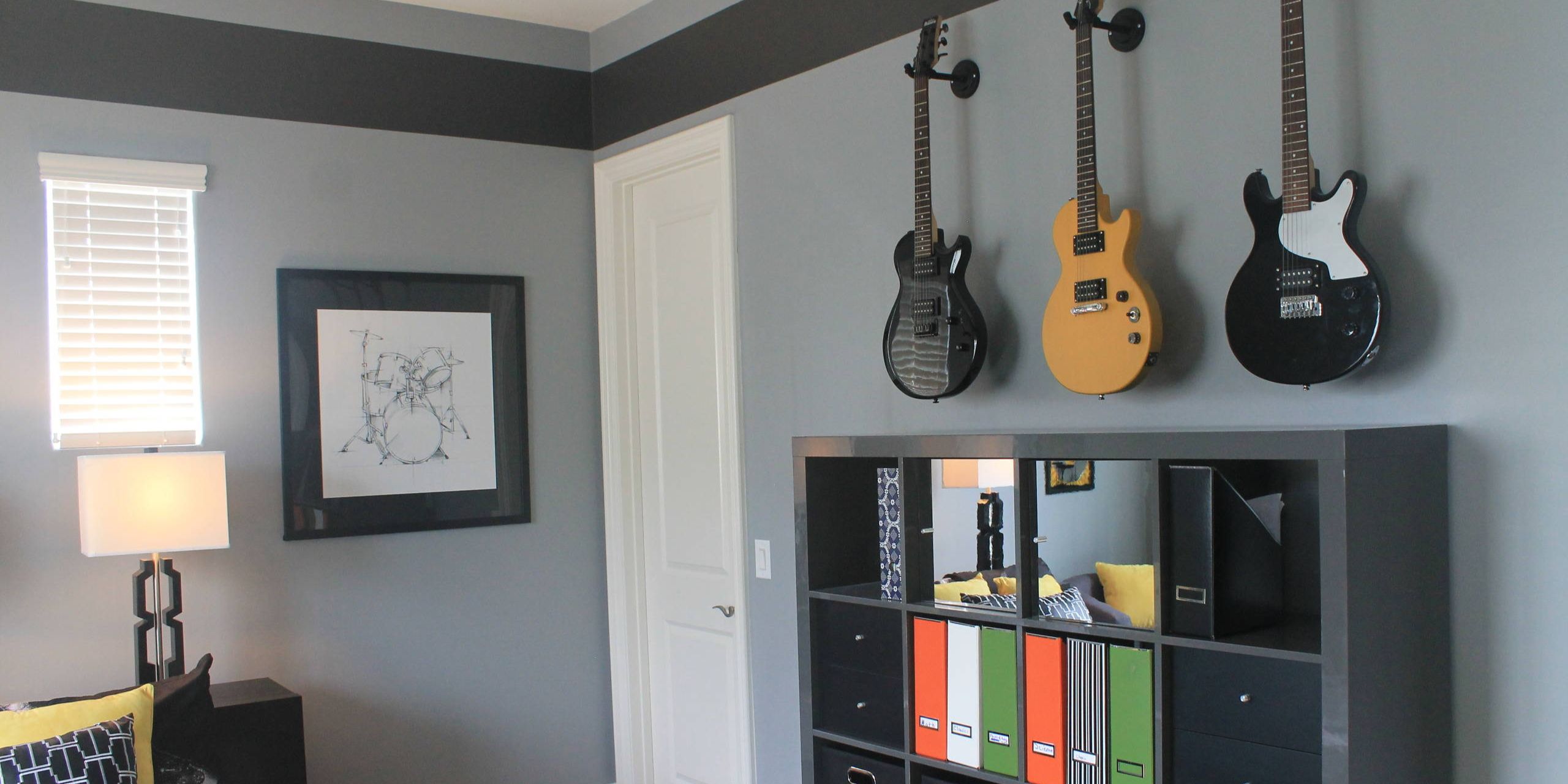Your instruments are an extension of your work and an essential component of your life as a musician. Displaying them in your home not only demonstrates your love of music but also gives your living area a touch of class and originality. A tastefully displayed instrument collection might encourage you to practice more frequently and work as a conversation starter for visitors. This post will discuss numerous strategies for displaying your instruments in a beautiful and practical way so that your home is as lovely as your music.
The Best Place for Your Instruments to Be
Picking the ideal spot in your home is the first step in constructing the ideal display for your musical instruments. Where you put your instruments depends on a number of criteria, including:
Size and organization of the space: Make sure there is enough room for your instruments and that they don’t overcrowd the space. When planning your display, take into account the size and shape of the room as well as any existing furniture.
Visibility with natural light: Make use of natural light sources to brighten your instruments and increase their visibility. Direct sunlight should be avoided, though, as it might harm some instruments, especially wooden ones.
Accessibility for practice and performance: Make sure that you can easily access your instruments for both practice sessions and performances. You should be able to easily access your instruments as needed thanks to a sensible display.
When deciding on the ideal location for your instrument display, it is crucial to strike a balance between aesthetics and practicality. The perfect area should have both attractive aesthetics and useful features.

Options for Displaying Various Instrument Types
There are different display options to think about depending on the type of instruments you own:
String instruments, first
Guitars, violins, and other string instruments look fantastic when displayed on wall mounts and hooks. They save up floor space and let you display your instruments on your walls as works of art.
Without taking up any wall space, freestanding stands and racks offer a stable and convenient way to exhibit string instruments. To maintain the attention on your instruments, take into consideration stands with a simple design.
Custom-built shelves: For a more unique touch, think about having shelves designed specifically to keep your instruments. With this choice, you may design a distinctive display that matches the interior design of your house.
B. Instruments for the keyboard
Keyboard stands that are fashionable and useful: Pick a stand that not only firmly supports your keyboard instrument but also blends in with the decor of your area.
Repurposing furniture for display: Take into consideration converting an existing piece of furniture into a keyboard stand, like a console table or a buffet. With this choice, you can easily include your instrument into the design of your house.
Making a special piano nook: If you own a piano, set aside a space in your house just for it. To make the area comfortable and inviting, arrange furniture, lighting, and accents around the piano.
C. Instruments that make noise
Drum stands and racks: Show off your drum set on a stand or rack that accentuates its fine craftsmanship and design. Pick a setup that is both useful and aesthetically pleasing.
Creatively displaying hand percussion: To give your home a touch of international flair, arrange hand percussion instruments like tambourines, maracas, and bongos on shelves or in beautiful baskets.
Making the most of vertical space: Hang percussion instruments, such as cymbals and gongs, from ceiling hooks or on walls to make a powerful statement.
Including Musical Instruments in Your Interior Design
Consider combining your instruments into your home design to make a unified and eye-catching space:
A. Music-themed spaces and decorative touches: Set aside a location in your home with a musical theme. To complete your instrument display and create a mellow environment, add musical touches like framed sheet music, performance posters, or vinyl recordings.
B. Complementing your instruments with color and patterns: Pick a color scheme or pattern that makes your instruments seem better. Consider employing contrasting hues and textures in your decor, such as a glossy black piano, to make the piece stand out.
C. Combining styles for a distinctive appearance: Don’t be afraid to mix and match various styles, such as modern, rustic, or vintage, to create a unique and eclectic presentation. Try out different types of materials, coatings, and accessories to create an instrument that reflects your individual musical taste.
Lighting and Putting Your Instruments on Display
When displaying your instruments, proper lighting is essential. It not only draws attention to their attractiveness but also creates the right atmosphere for rehearsals and performances. Consider the following illumination alternatives:

A. Spotlights: To produce a dramatic and concentrated lighting effect, install spotlights above your instruments. With this kind of lighting, your instruments become the center of attention in the space.
B. Accent lighting: To give your instrument display a gentle, warm glow, use accent lights like LED strips, table lamps, or floor lamps. This kind of lighting fosters relaxation and creativity by fostering a warm environment.
C. Ambient lighting: To give general illumination for the entire space, think about incorporating ambient lighting, such as dimmable ceiling lights or wall sconces. For practice and performance sessions, this kind of lighting creates a cozy and welcoming atmosphere.
Making a big statement and improving the aesthetics of your home need creating a focal point with your instrument display.
How to Keep Your Displayed Instruments Safe
Protecting your instruments from potentially damaging environmental elements is crucial while displaying them:
A. Temperature and humidity: Extreme temperature and humidity swings are especially damaging to wooden instruments. Maintain a consistent temperature and humidity level in the space where you store your instruments, and use a humidifier or dehumidifier as needed.
B. Dust and dirt: To avoid dust and dirt accumulation, regularly clean your instruments and the area where they are displayed. Avoid using harsh cleaning agents that can harm your instruments by using a soft, lint-free cloth instead.
It takes skill to arrange musical instruments in a way that reflects your love of music while still being aesthetically pleasing and practical. You may make your home a lovely and inspiring space that fosters creativity and enthusiasm for the art of music by picking the ideal location, display options, decor, and lighting. You’ll do this by furnishing your home in a way that showcases your individual musical taste and acts as a continual reminder of the beauty and joy that music brings into your life.
